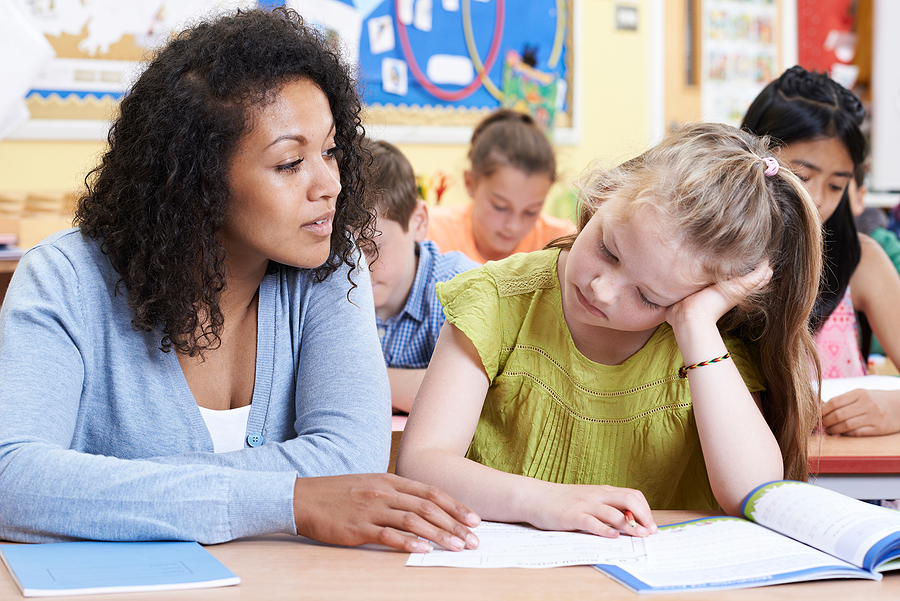
Lauren C. Moye, FISM News
[elfsight_social_share_buttons id=”1″]
The Nation’s Report Card, an education survey of fourth-and-eighth-grade U.S. students, reveals that COVID-19 pandemic measures set American education back decades, impacting lower-leveled learners and minorities to a greater degree.
But even as federal data reveals how detrimental school lockdowns were for American students, those who promoted them on a national level have escaped accountability and are trying to pin the blame entirely on Trump.
Crucial 2019 and 2022 education comparisons
The National Assessment of Educational Progress (NAEP) has studied the development of what American students know since 1990. The assessment is overseen by the National Center for Education Statistics (NCES), which is a federal entity used to collect and analyze statistics related to education.
This year’s recently released National Report Card showed an alarming number of declines in mathematics. This includes the largest score decline in NAEP mathematics in both fourth-grade and eighth-grade students since they started compiling data, the largest number of states and jurisdictions with score declines since 2003, and severe declines among all racial and ethnic groups.
The statistics weren’t much better for reading, where it was found that the fourth-grade reading score “was lower than all previous assessment years going back to 2005 and was not significantly different in comparison to 1992” while the eight-grade reading score was lower than any assessment since “1998 and was not significantly different compared to 1992.”
The numbers show that 4th-grade students scored 217 in reading, a three-point decline from 2019. In math, these students showed a five-point decline in the latest assessment. 2003’s numbers were highlighted on both graphs for comparison of just how far nine-year-old students have been set back in their education.
For 8th-grade students, there was an eight-point decline between 2019 and 2020 in math, from 282 to 274, and a three-point decline in reading, decreasing to 260. In 2003, these numbers were 278 for math and 263 for reading.
The decline impacted nearly all of the 53 states and regions that participated at both grade levels and in both subjects. For example, eighth-grade mathematics decreased in 51 states and jurisdictions with two areas reporting no significant change.
While the scorecards deserve to be studied and analyzed for all the data they show, it’s crucial to understand how pandemic measures impacted the lower-performing students and minorities the most.
The statistics show that the majority of the score declines occurred in the students who were already struggling the most pre-pandemic and today. For example, fourth-grade reading levels remained at 266 for the 90th-percentile learners. The scores declined from 225 to 222 for the 50th-percentile middle-performing students. However, there was a six-point decline from 168 to 162 for the bottom 10th percentile.
Not surprisingly, these lower-performing students reported less access to computers or tablets for distance learning and less available schoolwork help during periods of school closures. This was a concern for many educators at the outset of the pandemic lockdowns, as many underprivileged students lacked the infrastructure or technology to be successful at home.
In another disparity that is likely to ripple through our society for decades to come, younger minorities showed a greater decline than their 4th-grade white counterparts. In math, white students only lost 3-points to Hispanic and black 9-year-olds, who both showed a 7-point loss.
In reading, these younger white students also lost three points. Black 4th-graders lost five-points of ground and Hispanics declined four points.
Democrats revise school closure history to blame Trump
The Democrats who contributed to this growing learning gap not only have been held unaccountable to date but they have also downplayed their own role in the affair.
“If this is not a wake-up call for us to double down our efforts and improve education, even before it was – before the pandemic, then I don’t know what will,” U.S. Secretary of Education Miguel Cardona told CNN during a “New Day” interview segment earlier today.
Cardona asked schools to use COVID relief funding to help boost student scores and to invest in competitive teacher salaries to help.
The education secretary has previously positioned himself as a key person in fighting against this education gap that he blames on the Trump administration. According to Cardona, President Joe Biden’s administration has “recognized these threats” from the pandemic all along and made it a “top priority to get schools safely re-opened.”
Yet a Biden campaign ad attacked former President Donald Trump for the exact opposite stance, portraying him as “desperate to reopen schools” despite potential health risks.
While the Biden administration pushed vague school opening messaging that sometimes included recommendations to close during surging case numbers, conservative parents, who aligned more closely with Trump messaging by wanting schools open and masks off, were called selfish and warned they would get people killed through the pandemic.
Fear-based messaging like this contributed to community resistance to re-opening schools at a later point, most notably among black and Latino populations.
Cardona is not the only one trying to sidestep culpability for this education disaster. America’s top doctor and pandemic measure spokesman, Dr. Antony Fauci, has also recently tried to escape guilt.
When recently asked if it was a mistake to close down schools, Fauci said that he didn’t like the word “mistake,” but admitted that “there will be deleterious collateral consequences when you do something like that.” He then tried to distance himself from the recommendations to close down schools saying that he emphasized health officials should do “everything we can to keep the schools open.”
Regardless of whose responsibility it is, educators are now left with the task of trying to pick up the pieces of failed policy and bridge the gap that months of remote learning have created.
